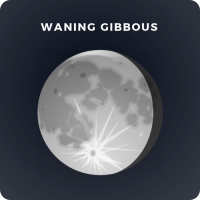History
Visible to the naked eye even under moderate conditions, this object was known as "the little cloud" by the Persian astronomer Abd-al-Rahman Al-Sufi, who described and drew it in 964 AD. in his "Book of Fixed Stars". It must have been commonly observed and known to Persian astronomers in Ispahan as early as AD 905, or even earlier.
R. H. Allen (1899 - 1963) reported that it also appeared on a Dutch star map from the year 1500.
Charles Messier, who cataloged it on August 3, 1764, was obviously unaware of these earlier reports, and attributed his discovery to Simon Marius, who was the first to give a telescopic description in 1612, but who (according to RH Allen) did not make him claim his discovery. Unaware of the discoveries of Al-Sufi and Marius, Giovanni Batista Hodierna independently rediscovered it before 1654. However, Edmond Halley, in his 1716 treatise "Nebulae", gives his discovery to the French astronomer Bullialdus (Ismail Bouillaud), who observed it in 1661, but Bullialdus himself mentions that it had been observed 150 years earlier (early 16th century) by some anonymous astronomer (RH Allen, 1899 - 1963).
The "Great Andromeda Nebula" was considered one of the closest nebulae. William Herschel believed, erroneously of course, that its distance did not exceed 2,000 times the distance from Sirius (17,000 light-years); however, he saw it as the closest “island universe,” similar to our own Milky Way, which he assumed was a disk with a diameter equal to 850 times Sirius' distance and a thickness 155 times that distance.
It was William Huggins, the pioneer of spectroscopy, who in 1864 pointed out the difference between gaseous nebulae, with their spectrum of lines, and the "nebulae" that we now know to be galaxies, with continuous spectral lines, similar to those of stars, and obtained a continuous spectrum for M 31 (Huggins and Miller, 1864).
In 1887, Isaac Roberts obtained the first photographs of the Andromeda "nebula", showing for the first time the basic features of its spiral structure.
In 1912, VM Slipher of the Lowell Observatory measured the radial velocity of the Andromeda "nebula" and found it to have the fastest velocity ever recorded, about 300 km. per second, getting closer. This already pointed to the extra-galactic nature of the object.
DESCRIPTION
M 31 is the famous Great Andromeda Galaxy, our closest neighbor which, together with its companions M 32, M 110 (both dwarf galaxies) and M 33, and many others, form the Milky Way's Local Group of Galaxies. It's among the most recognizable objects in the sky, and it's hard for the most novice astronomy buff to need any guidance to find it. On the other hand, M 31 is the only spiral galaxy indisputably visible to the naked eye in the entire sky. With binoculars, it is possible to see the enormous difference between the dense, luminous, oval and somewhat yellowish bulb, and the bluish spiral disk, with alternating dark bands, much weaker. In no other galaxy is it possible to see such a spectacular contrast.
Modern values for galactic rotation and heliocentric radial velocity result in the Andromeda Galaxy and the Milky Way approaching at a speed of about 100 kilometers per second.
M 31 has at least 300 billion stars (probably half a trillion). It has a powerful bulb and at its center a very powerful core, in which the equivalent mass of 160 million suns is concentrated in a volume only 34 light-years across.
Andromeda is certainly the most widely observed "outside" galaxy today. This is especially important because it allows the study of features of a galaxy seen from the outside, features that are also those of the Milky Way, which cannot be observed because so much of our galaxy is obscured by interstellar dust. There is a permanent interest in the study of spiral structure, open and globular clusters, interstellar matter, planetary nebulae, supernova remnants, galactic node, among many other objects that also deserve the attention of amateurs.
The brightest of the 300 globular clusters of the Andromeda Galaxy, G1, is also the brightest of the Local Group of Galaxies; its apparent visual magnitude from Earth is approximately 13.72. It also surpasses the Milky Way's brightest globular cluster, the Omega Centauri, and can also be guessed by well-equipped amateurs under very favorable viewing conditions. It is, once again, with astrophotography, because it manages to capture the least amount of light coming from its spiral arms, as can be clearly seen in our illustration.
The Andromeda galaxy is in notable interaction with its companion M 32, which appears to be responsible for a considerable part of the disturbances in the spiral structure of M 31. The neutral hydrogen arms are offset relative to those consisting of stars. For about 4,000 light years, and cannot be continuously tracked in the area closest to its smaller neighbor.
💫
The core rotates rapidly over a period of 310,000 years. In the early 1990s, much larger movements were discovered in its core, undoubtedly related to a singularity that nestles in its bosom, also responsible, probably, for the radio emission that reaches us. Gigantic clusters of great density nest in the NE wing, and in their environment there are a large number of globular clusters that only photographs can show.
You Might Also Like :


















0 commenti:
Post a Comment